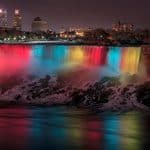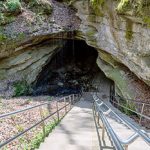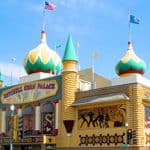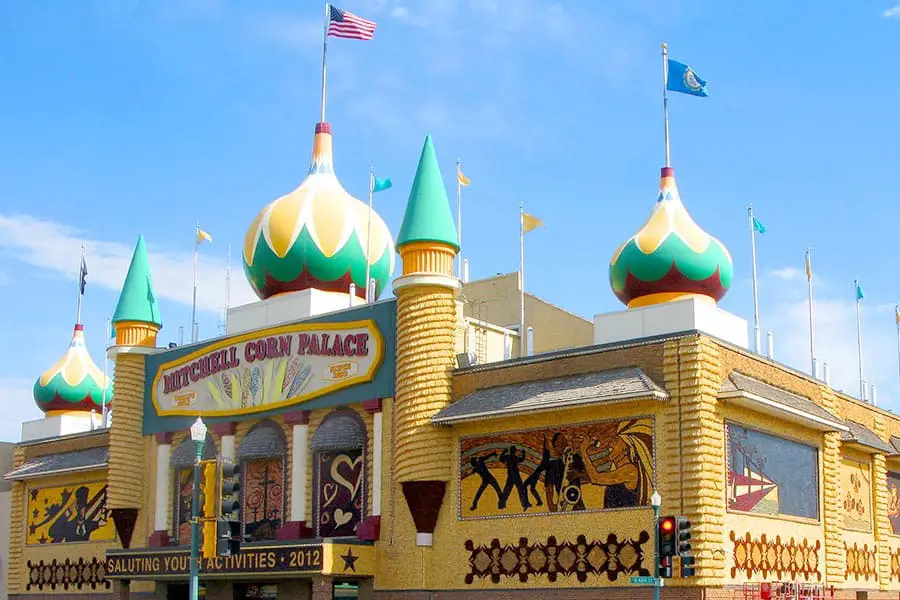
Nestled in the southwest corner of the South Dakota plains, travelers find the Corn Palace, also known as The Only Corn Palace in the World. Each year, over half a million people visit the Palace. But, with such a famous name and reputation, is the Corn Palace actually made of corn?
Though the Corn Palace is not made of corn, there are murals made of 12 different colors of corn that adorn the outside of the building. These murals are updated each year and include grains and natural grasses. Each year the murals are removed and recreated in line with a new theme.
The Corn Palace is known as The Only Corn Palace in the World. As a one-of-a-kind attraction, this palace has activities and events throughout the year. The following sections give visitors a comprehensive look at the past and present of the Corn Palace and the things you won’t want to miss.
A Palace Adorned with Corn
South Dakota’s tree-dotted city of Mitchell is home to about 16,000 people. Those driving in Mitchell see many traditional buildings and homes throughout the tree-dotted city. Everything looks like an ordinary city until the Corn Palace comes into view.
The Corn Palace sticks out because of its size and architecture. It stands above any of the buildings around because its architectural style is Moorish Revival. Moorish Revival architecture was born from mixing Islamic and European styles. It is characterized by horseshoe arches, domes in the shape of onions, and colorful spires on the domes.
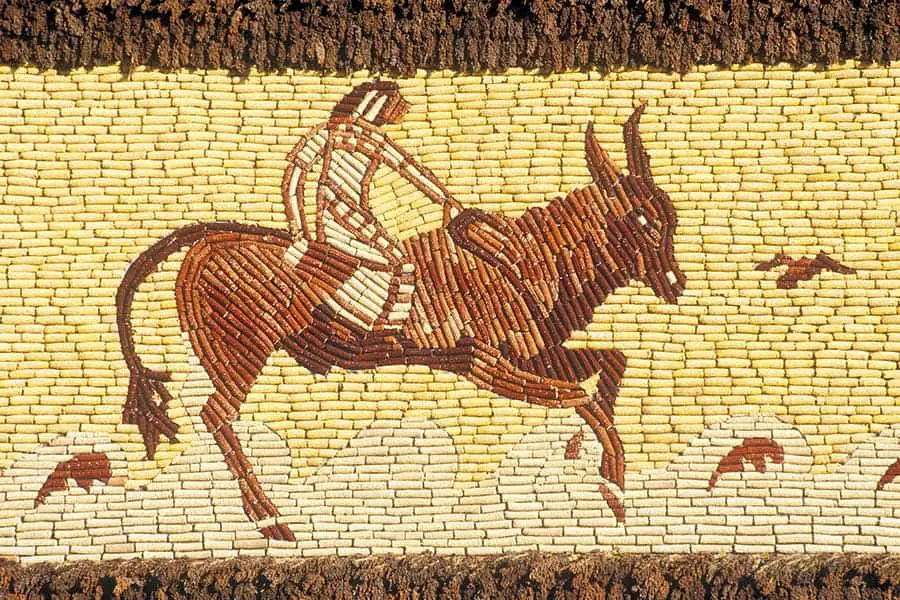
The Moorish inspiration is throughout the colorful Corn Palace grounds. Upon entering the lobby of the main building, visitors can see pillars colored in a tile that looks like corn kernels. There is some connection to corn everywhere you look during a visit to this two-story, 43,510 square foot palace.
In 1892, the city of Mitchell was only 12 years old, and the Corn Palace was first built on the city’s Main Street. The Corn Palace was a place where residents of the town and those who lived in the surrounding rural areas could gather and celebrate the harvest season. The Corn Palace was also meant to stand as a reminder of South Dakota’s thriving, healthy agricultural environment.
The Corn Palace is open throughout the year, with occasional closures around the holidays. Typically, it’s open from 8 am to 5 pm each day of operation. During that time, there are guided tours (free in the summer) where tour guides share the history and culture that is part of the Corn Palace.
Tourists can also explore the Corn Palace at their own pace. It takes around an hour to wander the Corn Palace and its grounds, though those who stop at all the exhibits could spend all day there. This attraction is truly a one-of-a-kind stop unlike anything around in South Dakota.
How Much Corn is Used in the Corn Palace?
Over 275,000 ears of corn are used each year to decorate the palace. The colors of corn used in the murals range from red and brown to calico, white, and orange. The murals on the outside, often described as folk art, are created by cutting the ears of corn in half lengthwise and then nailing the flat side to the façade of the building with a nail gun. It takes over one million nails to complete all the murals.
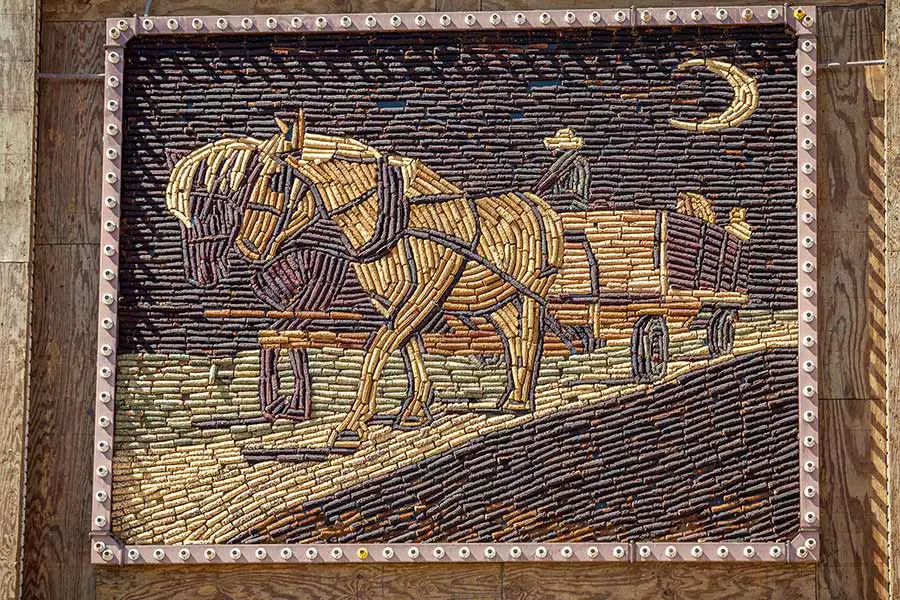
In addition to corn, the palace uses around 3,000 bushels of native grains and grasses to enhance the outside of the building. By the time the corn, grasses, and grains are attached, they cover most of the building.
With all that corn, does the outside of the building become a feeding ground for birds and squirrels? Occasionally, birds try to eat the corn, but few bother because there is nowhere to land on it since all the murals are on vertical surfaces. Some of the different colored corn is also harder than sweet corn, which helps to deter both birds and squirrels.
Road Trip Answers Fun Fact: The Palace has a corn cam, a live camera focused on the second-floor balcony. If you visit, make sure to tell your friends/family to tune in as you wave to them from the balcony!
Other Posts of Interest
- Can You Drive To Assateague Island? +How To See The Ponies
- Which is Better: Yellowstone or Grand Teton? (Are There Bears)
- Which Is Better To Visit: San Antonio Or Austin? +Safety Tips
- Is It Worth It To Drive Through Rocky Mountain National Park?
How Often Do They Change the Corn on the Corn Palace?
Each year, the murals on the Corn Palace change. Some of the past themes include Animals of South Dakota, Scenes of the Old West, American Pride, Rock of Ages, South Dakota Weather, and Salute to Military, to name a few. Removal of the old murals begins around May, and they are finished taking them down by August. After that, artists create the new murals, which are completed by October.
The mural removal and creation process can also be affected by the crop produced that year and if the growing season progresses as expected. In the past, murals were designed by local artists. However, today, the murals are designed and created by students from Dakota Wesleyan University. Specifically, students in Digital Media and Design courses work on the murals.
First, they create designs based on that year’s theme. Once the previous year’s murals are removed, the students’ designs are transferred to the blank wood, and then corn is added according to the design. Think of paint by the numbers, but exchange paint for corn and a brush for a nail gun.
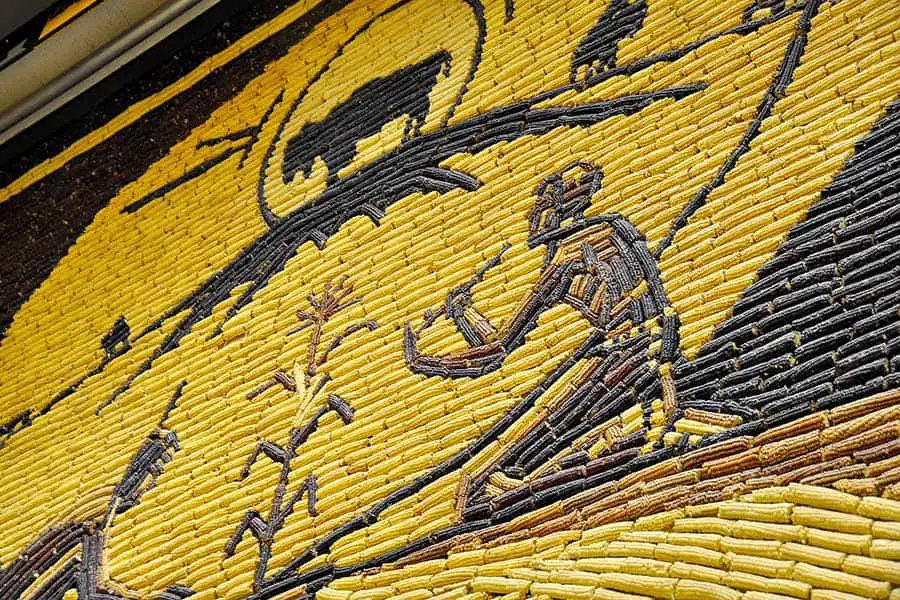
Due to mural construction, the best time to visit the palace if you want to appreciate the outside of the building is chilly November. In November, the murals are still new and fresh, and tourists can visit them in their full color. However, by the summertime, some of the colors in the murals fade due to exposure to the weather.
Despite what many people think, the murals are not painted; artists only use the colors that naturally occur in different kinds of corn.
Who Owns the Corn Palace?
The city of Mitchell owns and maintains the Corn Palace. It was originally built in 1892 and was one of 34 corn palaces in 24 Midwest towns. After the initial success of The Corn Palace, Mitchell decided to build another, which quickly became too small. Finally, in 1921, the Corn Palace that still stands in Mitchell was completed. It is the only one that remains; hence, the city of Mitchell describes it as the only Corn Palace in the world.
The building remains today thanks to the proper care by Mitchell. Now being around for over 100 years, the palace has been renovated and updated multiple times. In the 1930s, the Moorish design was added, which brought the addition of large domes on top of the building. The design has remained essentially unchanged since then. Today, it costs the city about $130,000 each year to maintain the building and grounds.
Is the Corn Palace Lit at Night?
The Corn Palace is a spectacular view at night. The murals are lit by colorful lights and outlined in string lights. But, perhaps the most striking features at night are the large Moorish domes. The domes are illuminated from the inside with colorful lights that can make them glow purple, red, gold, or blue.
Since the light colors can change, visitors can often see a combination of all the colors in one night, some domes being solid colors and others mixing colors. The contrast of the bright domes against a dark sky highlights the beauty of the architecture and makes the building look grander.
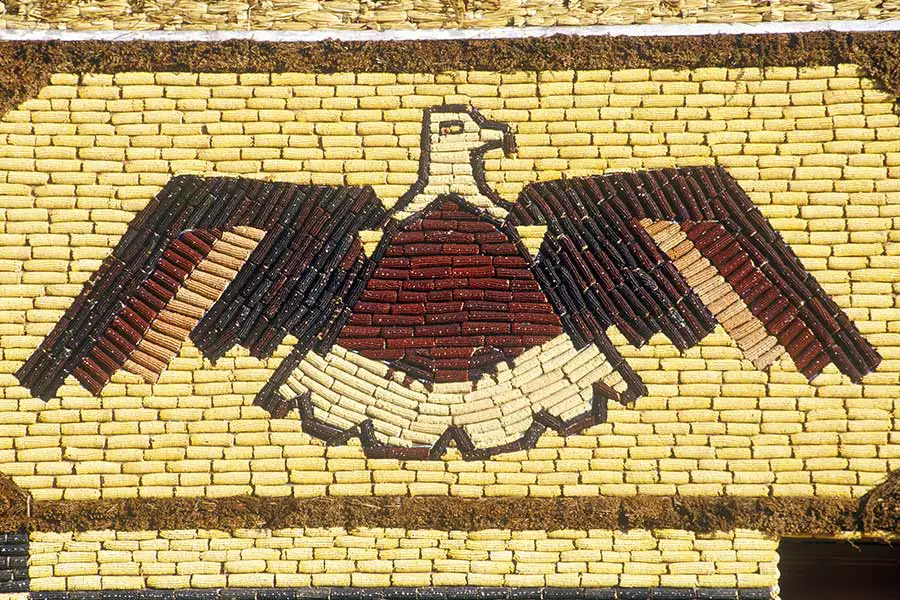
What’s Inside the Corn Palace?
The Corn Palace is a combination of a museum, gift shop, exhibition center, arena, and historical landmark. It helps the city by bringing many visitors each year, and it helps the local community by providing the perfect venue for all kinds of activities. Some of the activities held at the palace include division and state basketball tournaments, rodeos, festivals, and more.
This combination makes the Corn Palace different from many other tourist attractions because you won’t find only tourists there. The local people still use it for its original purpose, a gathering place for the local community.
During basketball season, it’s not uncommon to see the 3,200-seat basketball area packed with passionate fans. USA Today mentioned that the Corn Palace is one of the top ten places in the country to play high school basketball.
There are also murals inside the building. These murals are not switched out as often as the outside murals. On average, the inside murals are replaced every 10-15 years. They have been known to depict the positive relationships between Native Americans and settlers.
Inside the palace, there is also a wall history of the outside murals. This history features the different themes of the exterior murals throughout the years.
Don’t Miss the Corn Palace
Tourists and locals alike won’t want to miss all the Corn Palace has to offer. From discovering an important aspect of South Dakota’s agricultural history to catching a Mitchell High School basketball game, the Corn Palace is a must-see stop on your next visit to South Dakota.


